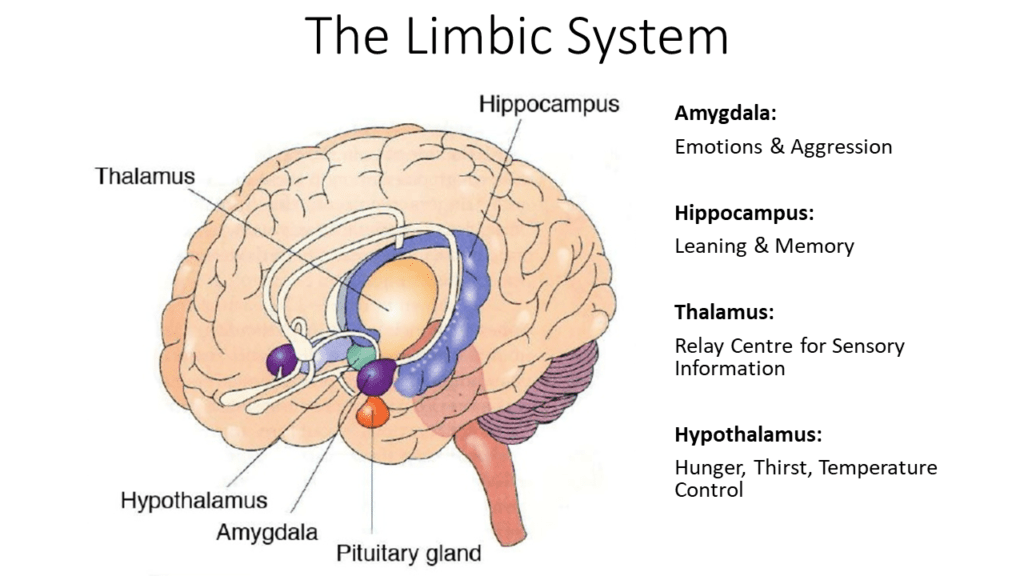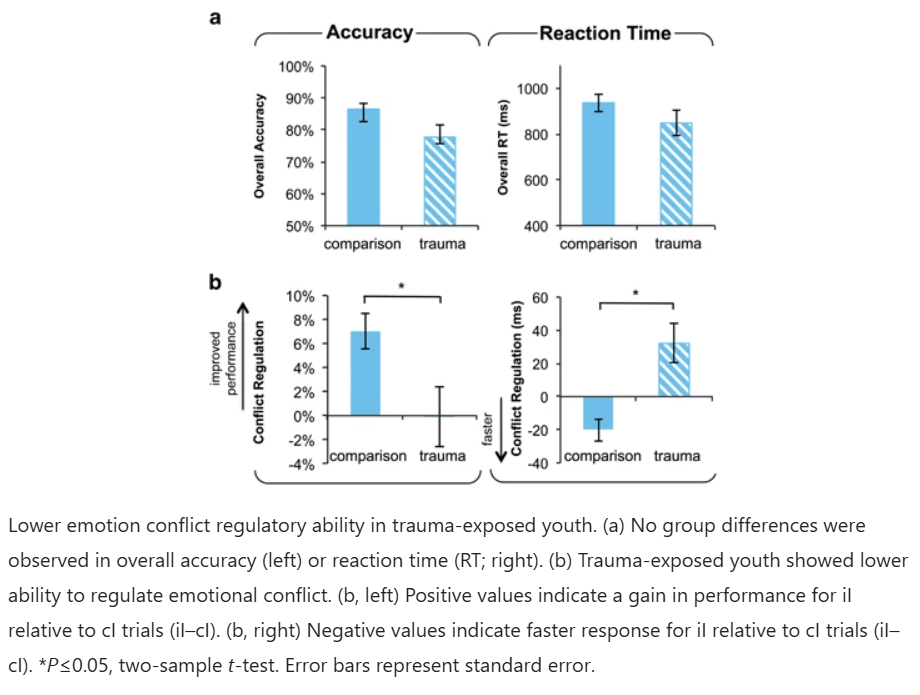Introduction
Negative emotions, including fear, anger, sadness, anxiety, and disgust, play a crucial role in human survival and social interactions. While they serve adaptive functions, prolonged or maladaptive negative emotional experiences can contribute to psychological and physiological disorders. Understanding the etiology and correlates of negative emotions provides insights into emotional regulation and mental health interventions.
Read More- Positive Emotions
Etiology of Negative Emotions
The development and manifestation of negative emotions are influenced by biological, social, and psychological factors.
1. Biological Basis
Neuroscientific research highlights the role of the autonomic nervous system (ANS) and the limbic system, particularly the amygdala and hypothalamus, in processing negative emotions.
- Amygdala and Emotional Processing: Studies using fMRI have shown that heightened amygdala activation is associated with fear and anxiety responses (LeDoux, 2000). The amygdala plays a key role in threat detection and orchestrates autonomic responses, such as increased heart rate and sweating.

Limbic System
- Prefrontal Cortex Regulation: The prefrontal cortex modulates negative emotions by regulating the amygdala’s activity. Research suggests that individuals with depression have decreased prefrontal inhibition of the amygdala, leading to heightened emotional responses (Davidson & Irwin, 1999).
- Physiological Responses: Electrodermal activity (EDA) studies indicate that individuals with heightened physiological responses to emotional stimuli may adopt an internalizing mode of emotional processing. Internalizers show strong autonomic responses but minimal external emotional expression (Buck et al., 1972).
2. Social and Environmental Influences
Social interactions and early life experiences significantly shape emotional responses.
- Attachment Theory and Emotional Development: Harlow’s (1958) studies on rhesus monkeys demonstrate that infants require social bonding for healthy emotional development. When deprived of maternal contact, monkeys exhibited excessive fear and aggression.
- Childhood Trauma and Emotional Dysregulation: Studies show that early life stress, such as abuse or neglect, leads to hyperactivity in the hypothalamic-pituitary-adrenal (HPA) axis, resulting in heightened stress responses and increased vulnerability to mood disorders (Gunnar & Quevedo, 2007).

Childhood Trauma is Associated With Lower Emotional Regulation Response and Reaction Time Retrived From https://www.nature.com/articles/npp2014311
- Cultural Differences in Emotional Expression: Research by Matsumoto (1990) highlights how culture influences emotional suppression or expression. Western cultures encourage emotional openness, whereas collectivist cultures emphasize emotional restraint.
3. Psychological Factors
Individual personality traits and cognitive processes also contribute to the experience and expression of negative emotions.
- Personality Traits: Studies indicate that neuroticism is strongly correlated with increased negative affect. Individuals high in neuroticism exhibit greater physiological and psychological reactivity to stressors (Watson & Clark, 1984).
- Internalizers vs. Externalizers: Jones (1935) categorized individuals based on their emotional expression. Internalizers suppress emotions, leading to higher autonomic arousal, while externalizers openly express emotions, exhibiting lower physiological stress responses (Buck et al., 1972).
- Cognitive Appraisal and Coping: Lazarus and Folkman’s (1984) research on stress and coping highlights how appraisal influences emotional experience. Negative emotions arise when individuals perceive a situation as threatening with limited coping resources.
Correlates of Negative Emotions
Negative emotions are associated with various physiological, psychological, and social outcomes.
1. Physiological Correlates
- Autonomic Nervous System Activation: Negative emotions trigger sympathetic nervous system responses, such as increased heart rate, elevated cortisol levels, and heightened skin conductance (Levenson, 1992).
- Health Consequences: Chronic stress and prolonged exposure to negative emotions contribute to cardiovascular diseases, weakened immune function, and gastrointestinal disorders (McEwen, 1998).
2. Psychological Correlates
- Mental Health Disorders: Studies link prolonged negative emotions to anxiety disorders, depression, and PTSD (Kessler et al., 2005). Emotional suppression has been associated with increased risk of mood disorders (Gross & John, 2003).
- Cognitive Impairment: Negative emotions, particularly stress and anxiety, impair working memory and cognitive flexibility (Shields et al., 2016).
3. Social Correlates
- Interpersonal Relationships: Excessive negative emotional expression can lead to social rejection, while emotional suppression can hinder relationship development (Keltner & Haidt, 1999).
- Workplace Performance: Research suggests that negative emotions, such as anger and frustration, can decrease job performance and workplace satisfaction (Judge & Ilies, 2004).
Conclusion
Negative emotions, while adaptive in short-term scenarios, can lead to significant physiological and psychological consequences if not regulated effectively. Understanding the etiology and correlates of negative emotions through biological, social, and psychological perspectives is crucial for developing effective emotional regulation strategies and mental health interventions.
References
Buck, R., Savin, V. J., Miller, R. E., & Caul, W. F. (1972). Nonverbal communication of affect in humans. Journal of Personality and Social Psychology, 23(3), 362-371.
Buck, R. (1976). Human Motivation and Emotion. Wiley.
Davidson, R. J., & Irwin, W. (1999). The functional neuroanatomy of emotion and affective style. Trends in Cognitive Sciences, 3(1), 11-21.
Gross, J. J., & John, O. P. (2003). Individual differences in two emotion regulation processes: Implications for affect, relationships, and well-being. Journal of Personality and Social Psychology, 85(2), 348-362.
Gunnar, M. R., & Quevedo, K. (2007). The neurobiology of stress and development. Annual Review of Psychology, 58(1), 145-173.
Harlow, H. F. (1958). The nature of love. American Psychologist, 13(12), 673-685.
Judge, T. A., & Ilies, R. (2004). Affect and job satisfaction: A study of their relationship at work and at home. Journal of Applied Psychology, 89(4), 661-673.
Keltner, D., & Haidt, J. (1999). Social functions of emotions. Handbook of Emotions, 2, 192-210.
Kessler, R. C., Berglund, P., Demler, O., Jin, R., & Walters, E. E. (2005). Lifetime prevalence and age-of-onset distributions of DSM-IV disorders. Archives of General Psychiatry, 62(6), 593-602.
Lazarus, R. S., & Folkman, S. (1984). Stress, appraisal, and coping. Springer.
LeDoux, J. E. (2000). Emotion circuits in the brain. Annual Review of Neuroscience, 23(1), 155-184.
McEwen, B. S. (1998). Protective and damaging effects of stress mediators. New England Journal of Medicine, 338(3), 171-179.
Shields, G. S., Sazma, M. A., & Yonelinas, A. P. (2016). The effects of acute stress on episodic memory. Psychonomic Bulletin & Review, 23(6), 1635-1647.
Subscribe to Careershodh
Get the latest updates and insights.
Join 18,514 other subscribers!
Niwlikar, B. A. (2025, April 8). Negative Emotions- 3 Important Etiology and 3 Insightful Correlates. Careershodh. https://www.careershodh.com/negative-emotions/
